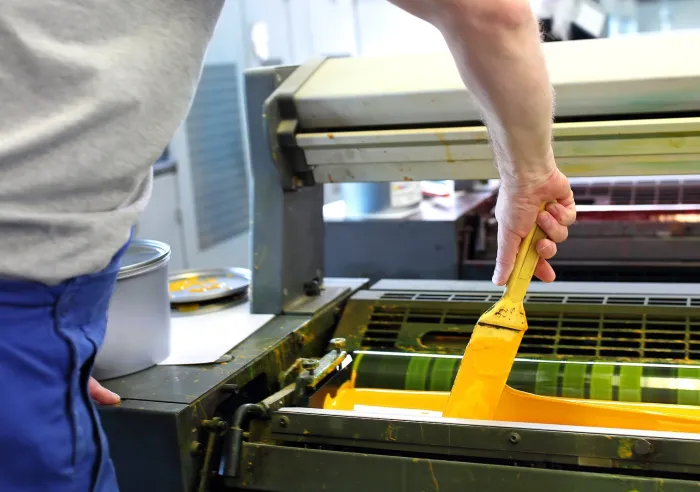When it comes to offset printing, two primary methods dominate the industry: web offset and sheet-fed offset. Both of these techniques are widely used, yet they serve different purposes and have distinct characteristics. Understanding the difference between web and sheet-fed offset is essential for marketing professionals, publishers, and business owners who want to choose the best printing method for their projects.
In this article, we will delve into the difference between web and sheet-fed offset to help you make informed decisions for your printing needs.

What is Web Offset Printing?
Web offset printing involves feeding a continuous roll of paper, known as a web, through the printing press. This method is ideal for high-volume printing runs, such as newspapers, magazines, and catalogs. The paper is printed on both sides and then cut into individual pages as it exits the press.
Advantages of Web Offset Printing
- High-Speed Production: Web offset presses can print thousands of pages per minute, making them perfect for large-scale projects.
- Cost-Effective for Large Runs: The continuous nature of the paper feed reduces costs for high-volume jobs.
- Consistent Quality: Web offset printing results in uniform and consistent print quality.
What is Sheet-Fed Offset Printing?
Sheet-fed offset printing uses individual sheets of paper that are fed into the printing press one at a time. This method is best suited for smaller print runs and projects that require high-quality prints, such as brochures, business cards, and fine art prints.
Advantages of Sheet-Fed Offset Printing
- High-Quality Prints: Sheet-fed presses offer superior image quality and color accuracy.
- Flexibility: This method can print on a wide range of paper types and thicknesses.
- Ideal for Customization: Sheet-fed printing is perfect for projects that require unique finishes or special inks.
Key Differences Between Web and Sheet-Fed Offset
1. Paper Feeding Mechanism
The primary difference between web and sheet-fed offset lies in how the paper is fed into the press. Web offset uses a continuous roll of paper, while sheet-fed offset uses individual sheets.
2. Production Speed
Web offset is significantly faster than sheet-fed offset, making it ideal for high-volume printing jobs.
3. Print Quality
While both methods offer high-quality prints, sheet-fed offset is known for its superior image quality and color accuracy.
4. Cost Efficiency
Web offset is more cost-effective for large print runs, whereas sheet-fed offset may be more economical for smaller jobs.
5. Flexibility and Customization
Sheet-fed offset offers more flexibility in terms of paper types, thicknesses, and finishes, making it suitable for customized projects.
Choosing the Right Offset Printing Method
Your choice between web and sheet-fed offset printing will depend on several factors, including the volume of your print run, the desired print quality, and your budget. For large-scale projects like newspapers and magazines, web offset is typically the better choice. On the other hand, if you need high-quality prints with customized finishes, sheet-fed offset may be the way to go.
Conclusion
Understanding the difference between web and sheet-fed offset is crucial for making the best printing decisions. Each method has its own strengths and weaknesses, so it’s essential to consider your specific needs and goals. For more information on offset printing, you can visit Regula Forensics.

FAQs
1. Which is faster, web or sheet-fed offset printing?
Web offset printing is faster and better suited for high-volume jobs.
2. Can sheet-fed offset printing handle large print runs?
While sheet-fed offset can handle large print runs, it is generally more cost-effective for smaller jobs.
3. What types of projects are best for sheet-fed offset printing?
Sheet-fed offset is ideal for high-quality prints such as brochures, business cards, and fine art prints.
This article contains affiliate links. We may earn a commission at no extra cost to you.






